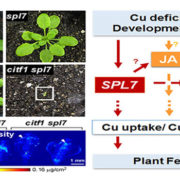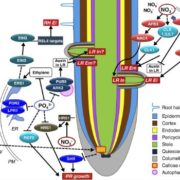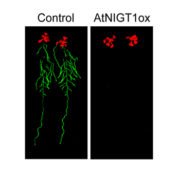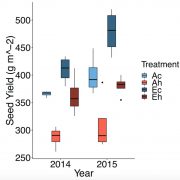Visualizing plant intracellular inorganic orthophosphate distribution
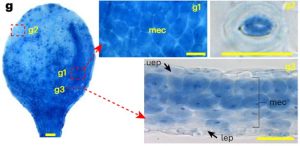 Phosphorus is the second most essential macronutrient in terms of limiting plant growth, acquired in the form of orthophosphate (Pi) by plant roots. The intricate processes of sensing, uptake, transport, storage, utilization, and cellular compartmentalization of Pi are finely orchestrated by a complex network of transporters and their regulators. The plant’s Pi status, encompassing both external and internal levels, propels a range of morphological and physiological adaptive responses collectively termed Pi Starvation Responses (PSRs). PSRs are indispensable not only for plant survival under Pi-starved conditions but also play a crucial role in symbiosis and plant immunity. This underscores the diverse functional significance of Pi signaling pathways. However, the accurate detection of Pi distribution at cellular and sub-cellular levels has proven to be a great challenge. Existing detection methods, using physical, biological, or chemical approaches, each possess inherent limitations, rendering direct visualization of Pi distribution in plant cells difficult. In a groundbreaking development, Guo and colleagues have introduced an efficient colorimetric staining method for Pi, based on the molybdenum blue assay. This methodology enables the observation of Pi distribution through microscopy at both cellular and subcellular levels, applicable to both living plant tissues and fixed sections. This breakthrough paves the way for new discoveries, shedding light on either novel components in Pi signaling or dissecting mechanistic insights into known regulators. (Summary by Ching Chan @ntnuchanlab) Nature Plants 10.1038/s41477-023-01612-9
Phosphorus is the second most essential macronutrient in terms of limiting plant growth, acquired in the form of orthophosphate (Pi) by plant roots. The intricate processes of sensing, uptake, transport, storage, utilization, and cellular compartmentalization of Pi are finely orchestrated by a complex network of transporters and their regulators. The plant’s Pi status, encompassing both external and internal levels, propels a range of morphological and physiological adaptive responses collectively termed Pi Starvation Responses (PSRs). PSRs are indispensable not only for plant survival under Pi-starved conditions but also play a crucial role in symbiosis and plant immunity. This underscores the diverse functional significance of Pi signaling pathways. However, the accurate detection of Pi distribution at cellular and sub-cellular levels has proven to be a great challenge. Existing detection methods, using physical, biological, or chemical approaches, each possess inherent limitations, rendering direct visualization of Pi distribution in plant cells difficult. In a groundbreaking development, Guo and colleagues have introduced an efficient colorimetric staining method for Pi, based on the molybdenum blue assay. This methodology enables the observation of Pi distribution through microscopy at both cellular and subcellular levels, applicable to both living plant tissues and fixed sections. This breakthrough paves the way for new discoveries, shedding light on either novel components in Pi signaling or dissecting mechanistic insights into known regulators. (Summary by Ching Chan @ntnuchanlab) Nature Plants 10.1038/s41477-023-01612-9



